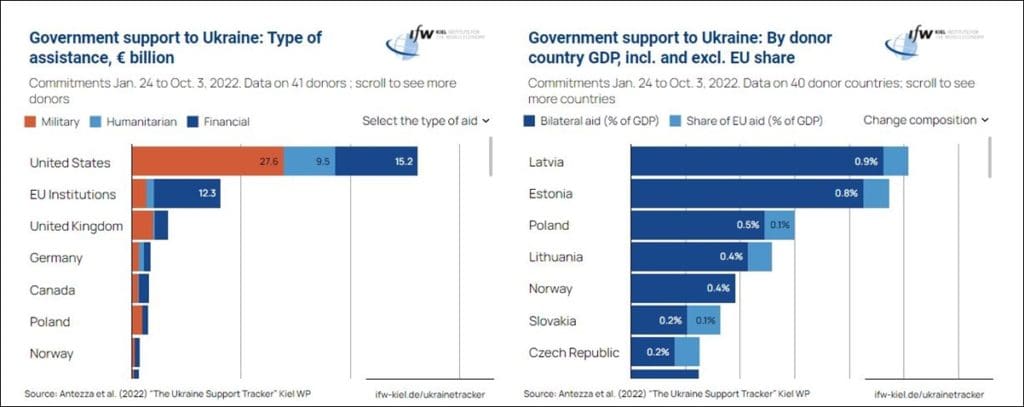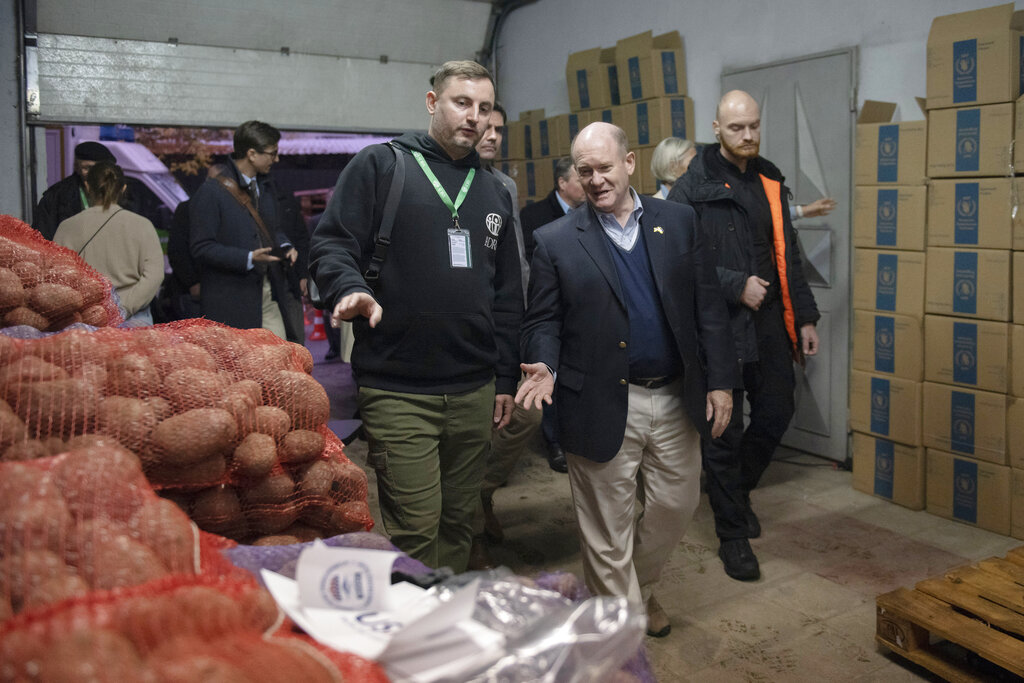With winter approaching and the energy crisis worsening, some EU member states need to fundamentally reassess their situation, and the renewed call to allocate tremendous sums of money to Ukraine is beginning to be overridden by the visible signs of social and political crises within their own borders.
Most importantly, fewer and fewer people believe it is realistic that Ukraine will ever repay even part of the loans beyond its grant aid. With Kyiv holding a bottomless bag in front of it, demanding billions and billions more with no end in sight, as cruel as it sounds, some are quietly pondering euthanasia.
Who gives and how much?
The aid that donor countries send to Ukraine can be divided into three parts. The most important is the arms shipments, without which the war would have been over long ago. Then comes concrete material aid and finally humanitarian aid. The Ukraine Support Tracker, a website set up by the Kiel Institute for the World Economy to monitor aid flows, has recently published a breakdown of aid by country for the period Jan. 24 to Oct. 3. The data shows that the U.S. is by far the largest donor overall: €52 billion in total over the period, while the various institutions and organizations of the European Union contributed “only” €16 billion.
The U.K. is third on the list with €6.7 billion, followed by Germany with €3.3 billion, and Canada with €3 billion.
The difference in these amounts justifies the increasingly sharp criticism of the U.S.’s decision to send increasingly more money to Ukraine when many of its own citizens and cities are in dire straits. In the United States, which is facing midterm elections, some experts and politicians, particularly on the conservative spectrum, are describing the Russo-Ukrainian war as a “European problem” and calling for reducing aid. If the Republicans win the majority in Congress on Nov. 8, there is a chance that the scale of financial aid flowing into Ukraine will change dramatically.
However, if the data is broken down, it is clear that the vast majority of American altruism is not financial aid but military aid. While arms supplies amount to €27.6 billion, the figure for material and humanitarian aid is €15.2 billion.
At the same time, the EU as an institution has provided €12.3 billion in financial aid. If only the EU member states at the top of the list — Germany €1.15 billion, Poland €1 billion, France €800 million, and Italy €500 million — are added, it is clear that the EU is financially donating more to Ukraine’s economic lifeline than the critical United States.

The statistics are very different when we look at how much each country is spending on Ukraine relative to its own means. In terms of GDP, Latvia leads with 0.9 percent, followed by Estonia (0.8), Poland (0.5) and Lithuania (0.4). The United States is only eighth on this list at 0.2 percent.






